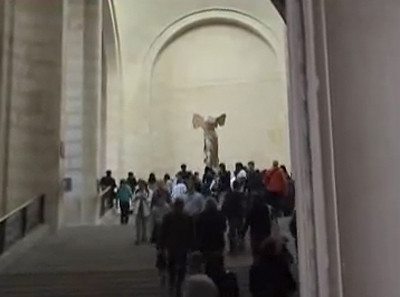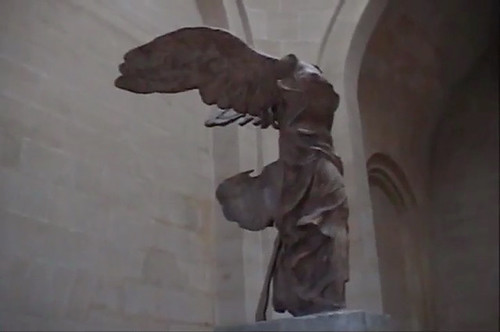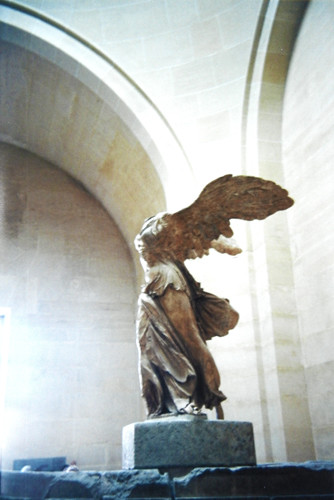Well, back to my Paris trip in 2000. The most unbelievable institution was naturally Musée du Louvre, whose immensity, both the structure itself and its collection was sheer breathtaking.
My strategy of touring the palace was dividing the collections into three categories - I'd ignore one of them altogether, and walk by the second group very quickly, and for the third group, I'd spend more time to study objects I was more interested in. Naturally, my impossible top two choices were from that last group.
The first pick was the dynamic La Victoire de Samothrace - Winged Victory of Samothrace (Nike of Samothrace), discovered in 1863, estimated to have been created around 190 BC. This classical marble defied the material constraints. Despite the fact that it was made of stone, it moved, its wings beat, its drapery flapped. Sweeping yet precise. Grand and delicate. The mastery of this sculpture was most justifiably celebrated.
In this damaged and incomplete form, one felt in the presence of divinity.



In contrast to that sculpture's monumentality, my second choice seemed quite fragile and humble. But that was quite deceptive. This self portrait by the great German painter Albrecht Dürer, dated 1491, though small in dimensions, was a window into a vast world and time. The classical pose, haunting gaze, the faithfulness of and melancholic and timeless air of the portrait, gave this intimate, somewhat narcissistic self-imagery a sense of encompassing the entire human history.
I was mostly drawn by the haunting beauty of this portraiture and the assured yet incredibly melancholic gaze of the sitter, who held the true and pitied us for the exclusion. Was he the judge of the folly of mankind?
I had set myself up with the impossible task of choosing only two favorite works from any institutions, even as vast as the Louvre. Yet, these two clearly deserved their exalted status.

My Favorite Museum Collection Series
>> My Favorite Museum Collection Series 30: My Favorite Paintings from Musée d'Orsay, Paris
<< My Favorite Museum Collection Series 28: My Favorite Paintings at Galleria dell'Accademia, Venezia (Venice Academy)





No comments:
Post a Comment